Jonathan Swift, Oscar Wilde, James Joyce, Lady Gregory, Sean O’Casey, George Bernard Shaw — the list of Irish writers who have graced the English language is a long one and continues to grow with the likes of Edna O’Brien, Seamus Heaney and Brendan Behan. So it is no wonder that Dublin, Ireland’s capital, has dozens of libraries, including some very special ones.
A recent visit to Dublin reminds what treasures lie in three of the city’s libraries: The Trinity College Old Library, Marsh’s Library and the Chester Beatty, all open to the public.
Old Trinity Library
The Long Room of the Old Trinity Library is the most famous of the three. Trinity College was founded by Queen Elizabeth in 1592. Aptly named, this beautiful room, built between 1712 and 1732, is the longest single-chamber library in the world at 213 feet long and 48 feet high, surmounted by a carved oak barrel-vaulted ceiling. Busts of writers and philosophers grace the sides of the library.
Among the 200,000 leather-bound books contained in the library are some of Ireland’s most ancient and precious volumes, including one of the last remaining copies of the 1916 Proclamation of the Irish Republic. The library’s jewel is the Book of Kells, a 9th century illuminated manuscript of the four gospels of the New Testament, written in Latin around 800 AD by Celtic monks, with gorgeous, vivid illustrations and exquisite calligraphy. (Kells is the name of the town in County Meath where the monks’ monastery was located.) A librarian changes a page each day. The Long Room and the Book of Kells are among Dublin’s most popular tourist attractions so there are often long queues to see the Book of Kells. There is an admission charge. A recent article in The New York Times announced that a renovation project to modernize temperature, fire and other safety measures started in April of this year, and the Old Library will be closed completely for three years beginning in October 2023.
Marsh’s Library
Marsh’s Library, my favorite of the three, is home to several eighteenth-century book collections. It was the first public library in Ireland when it opened in 1707. The old leather-bound books are in two galleries with a small reading room between them. The books remain in the same spots as originally placed three hundred years ago. Included are an original page from the first book ever published in Moscow in 1564, and a copy of Cicero’s “Letters to His Friends.” published in Milan in 1472. Very few books have been added since the eighteenth century collections.
The library was founded by Archbishop Narcissus Marsh who purchased the collection of 10,000 books belonging to seventeenth century clergyman Edward Stillingfleet. The collection, located in the First Gallery, is strong in history, law, politics, classical studies and science. Archbishop Marsh’s own collection, specializing in Middle Eastern languages, is in the Second Gallery. Among his collection is a first edition of Isaac Newton’s work on gravity.
In the small Old Reading Room is a rectangular wooden table. Writers have used this table throughout the centuries. Bram Stoker did research here while he was a student at Trinity College in 1866; James Joyce used it in 1902. Scholars today may apply to do research on any given topic at Marsh’s without paying a fee, but they now use a new reading room located downstairs from the galleries.
Glass cases hold current exhibits. The iron cages at the rear of the Second Gallery encased students in past centuries to prevent them from stealing the books. Some of the books in the Old Reading Rooms on a shelf facing the window contain bullet holes, the result of errant shots fired during a battle just outside the library during the 1916 Easter Rising.
Marsh’s welcomes children. For these younger visitors, the library has created a game called “Hunt the Book Thief.” A sheet of “Marsh’s Minifigures,” amusing little cartoon-like figures of writers who have used the library, is given to a child, who then tries to find the little figures which have been scattered throughout the shelves. For each figure found, a mark is made on the sheet of paper.
Chester Beatty Library
The Chester Beatty Library is located on the grounds of Dublin Castle, facing the castle gardens. It houses, among other objects and paintings, an outstanding collection of Islamic and Asian manuscripts, books and paintings, including some illustrated manuscripts dating to the eighth century and some of the earliest sources on papyrus for the Bible. Today, the Chester Beatty still functions as a library for research, but it is primarily a museum, open to the public, admission free.
The library and collection exist thanks to the passion of Sir Alfred Chester Beatty, an American mining magnate of Irish ancestry, born in New York City in 1875. Beatty began his professional life as a laborer in the Colorado silver mines, quickly rising to supervisor and then joining management. By the age of 32, he had become a millionaire.
In 1912, after the death of his first wife, Beatty moved to London with his two children. There he built a library for his growing collection. During World War II, he provided strategic raw materials for the Allies, In 1950, at the age of 75, he moved to Ireland; he was knighted by Queen Elizabeth in 1954 and received honorary Irish citizenship in 1957.
Beatty started collecting stamps and Chinese snuff bottles at an early age. Over time, he began to collect European and Persian manuscripts. His second wife, whom he married in London, was also an avid collector. When Beatty moved to Dublin in 1950, the collection went with him. There he built the library and museum which bear his name. The library opened in 1953, originally to be used by researchers and later by the public. The Chester Beatty collections and library re-opened to the public at Dublin Castle in 2000.
The museum is divided into temporary and permanent exhibition spaces. A recent exhibit was “Meeting in Isfahan,” the city which became the Persian capital in 1598, and was a center of “dazzling urbanity,” as the introduction to the exhibit describes the 17th and 18th centuries under the Safavid dynasty. The exhibit showcases, among other objects, paintings and drawings by the most renowned artists of the Safavid period. A current exhibit is First Fragments: Biblical Papyrus from Roman Egpyt.
The permanent collection exhibits offer a wealth of documents, sculpture, ancient books, drawings, illuminated manuscripts, samples of minerals used in making the colors for the illustrations, the pens and other instruments used for calligraphy, and fabrics. Outstanding are the samples of medieval leather- bound books. It is a universe of enlightenment and knowledge. The museum also offers labs and workshops for adults and teenagers, occasional musical performances, guided tours and lectures on Wednesday evenings.
Across a covered courtyard at the entrance to the Chester Beatty, in the old part of what used to be an eighteen-century Clock Tower building, is the Silk Road Cafe. The café occupies two rooms in the building with tables outside in the atrium. Guests choose dishes at a counter behind which the Mediterranean and Middle Eastern specialties served by the Silk Road Cafe are displayed. Selections change daily and include salads, stews, kebabs, falafels and soups. Desserts and drinks, including beer and wine, are available. Prices are reasonable and the preparations are excellent.
Whether you are thrilled by the colors of the Book of Kells, inspired by sitting a moment at that well used table in Marsh’s Old Reading room, or enchanted by the ancient leather volumes at the Chester Beatty, a visit to Dublin’s libraries is an enlightening experience.
Top Photo: One of the splendid medieval leather bound books in the permanent collection of the Chester Beatty by Corinna Lothar
Corinna Lothar is a Washington D.C. writer, critic and lawyer. She has traveled all over the world, writing about food, travel and culture. All photos are taken by Corinna Lothar.

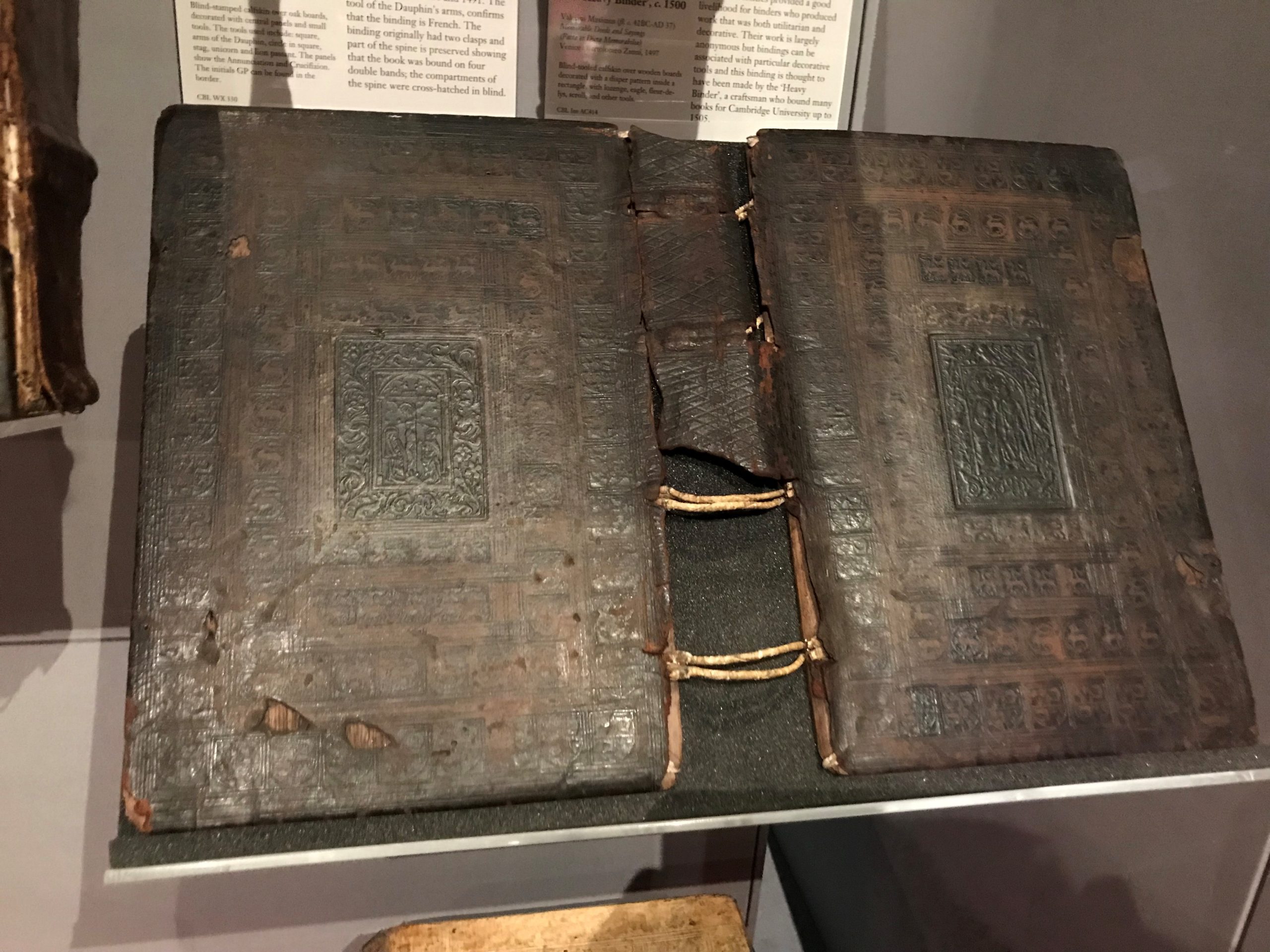
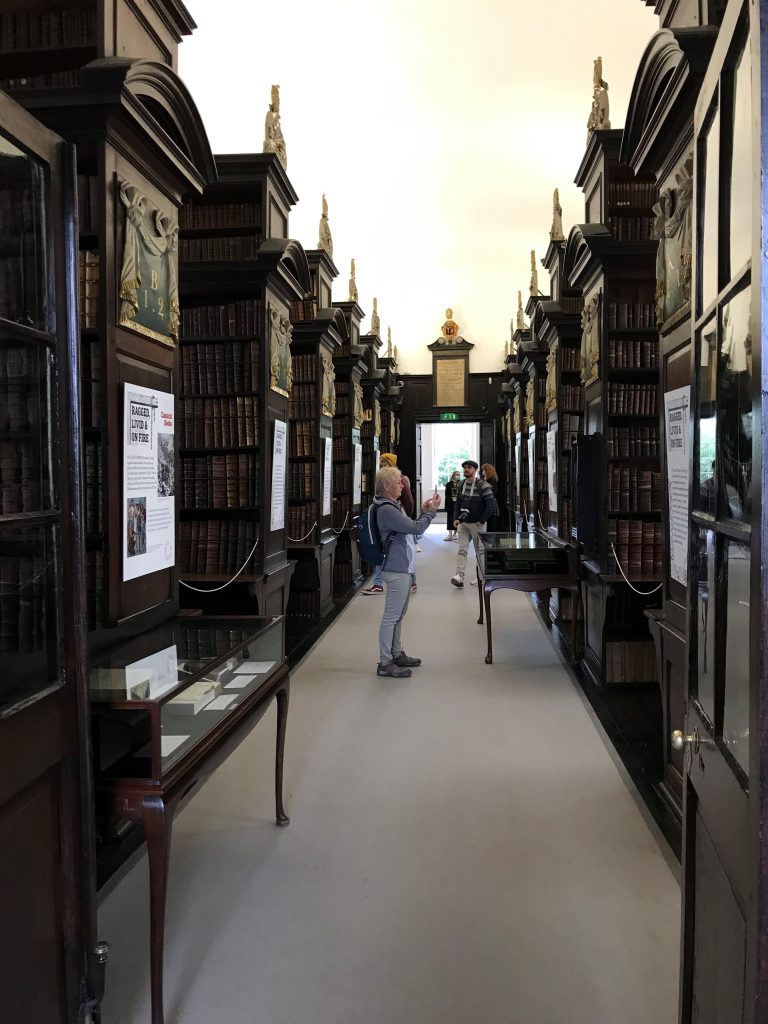
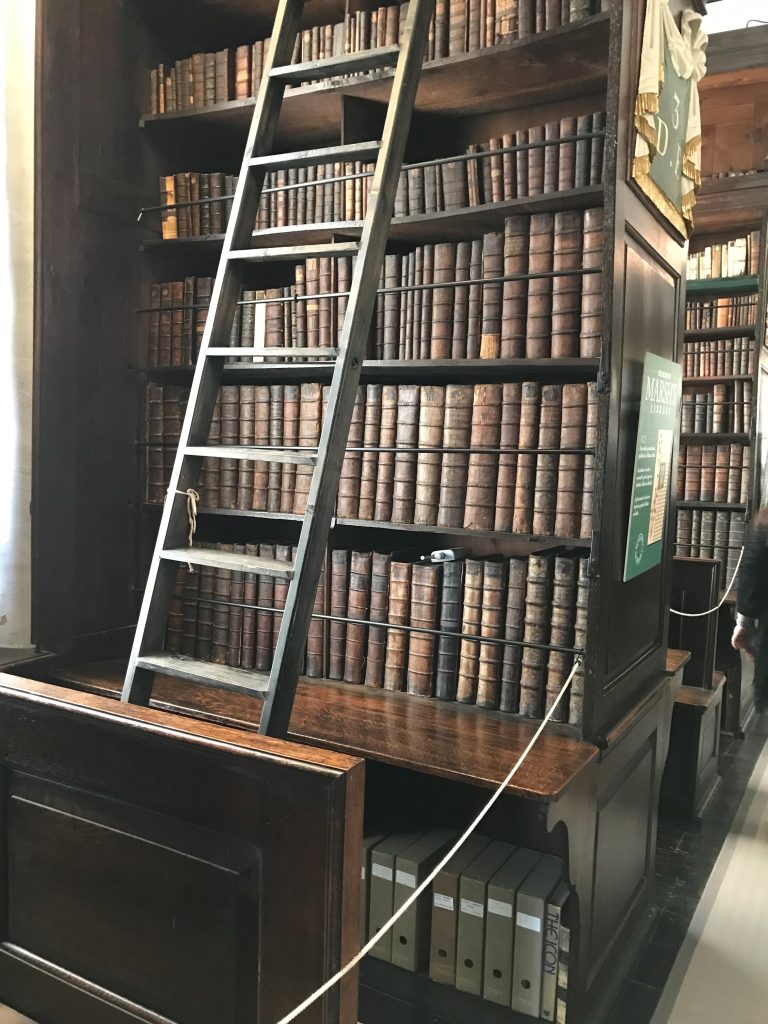
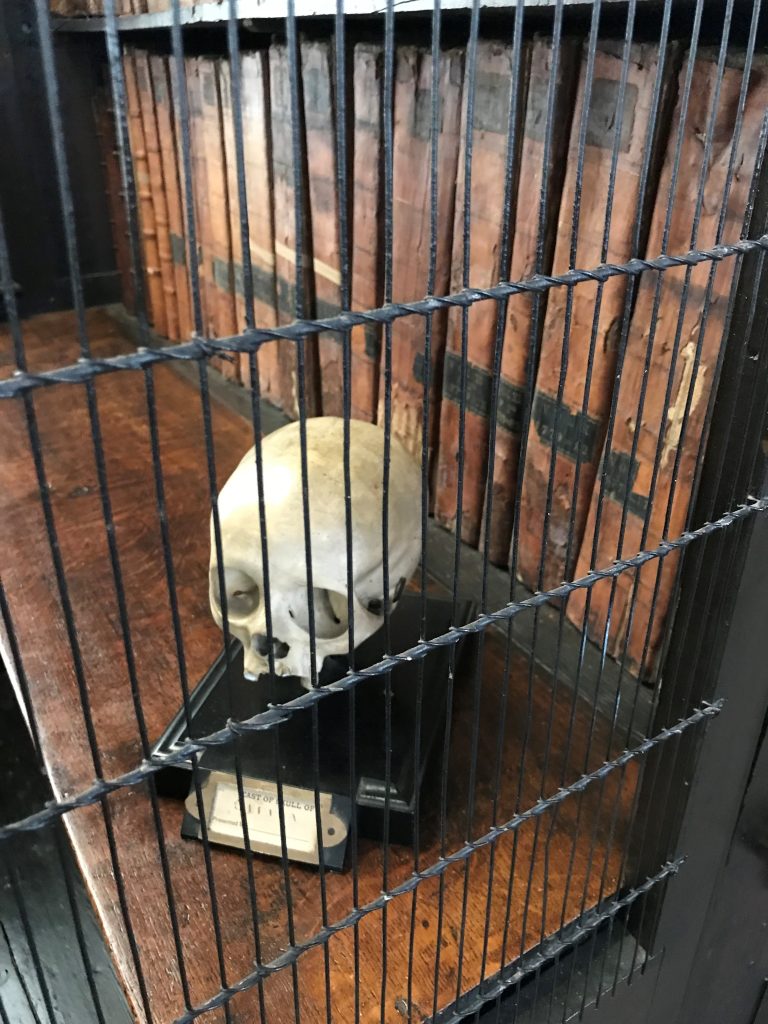
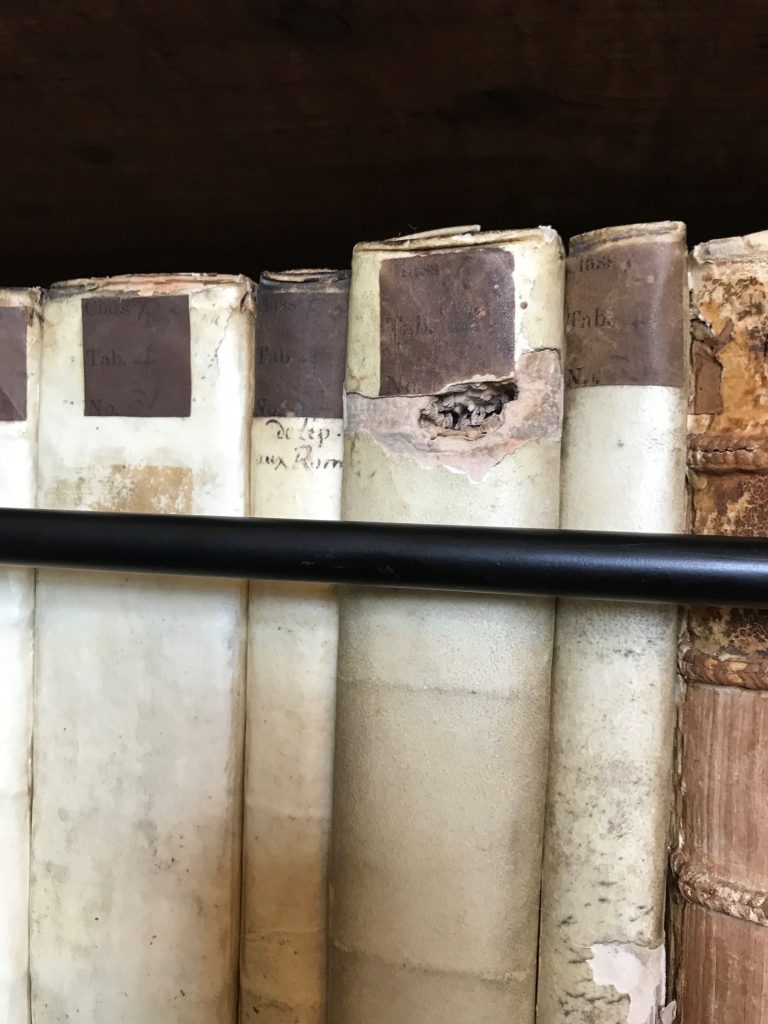
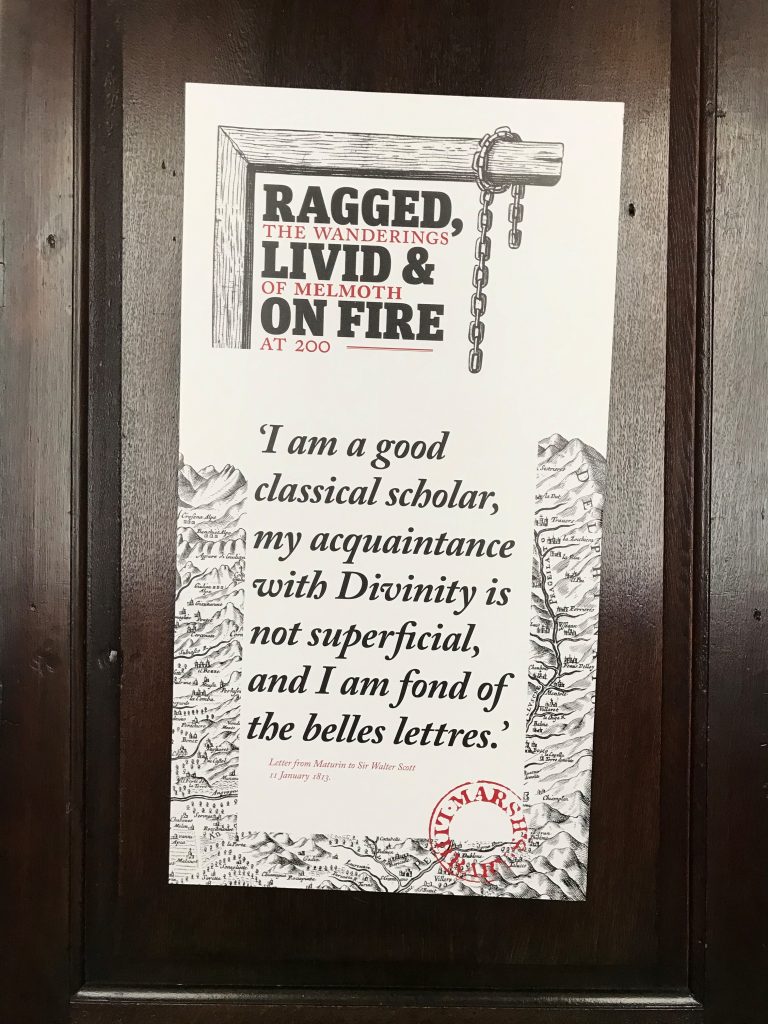

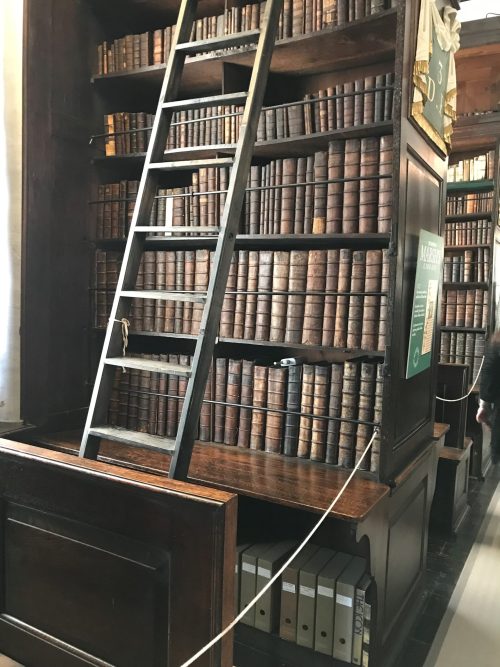
1 Comment